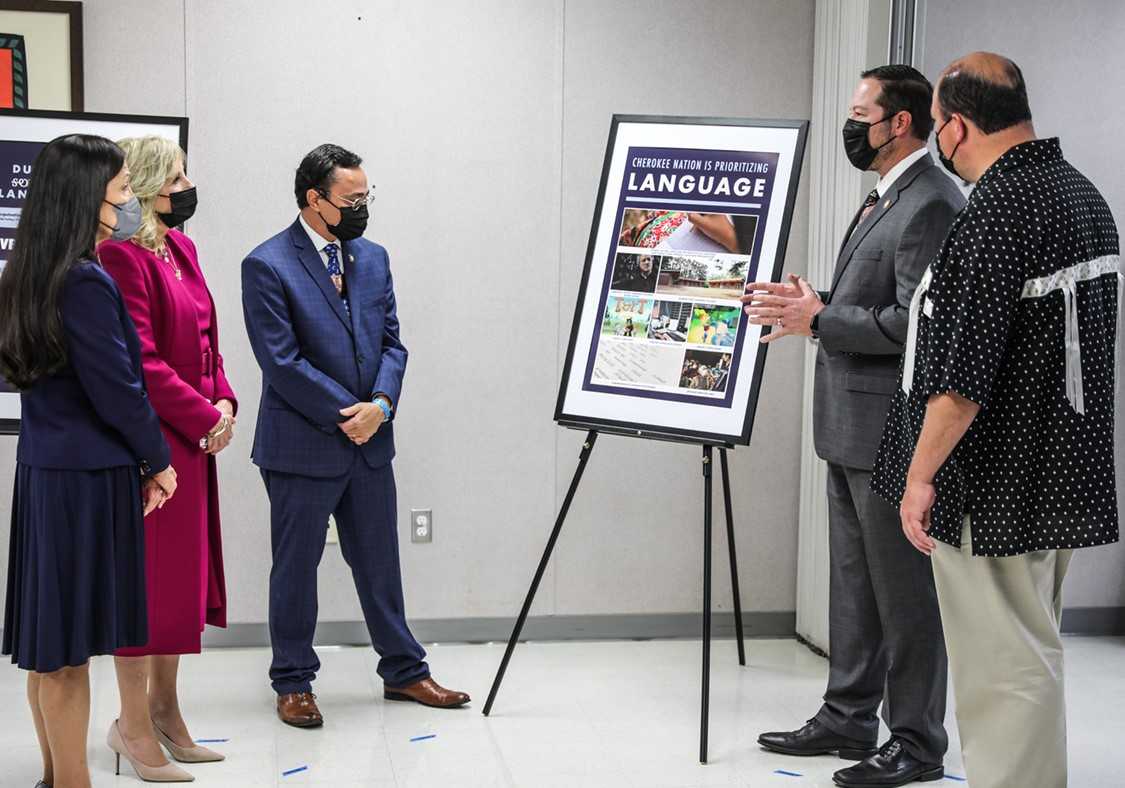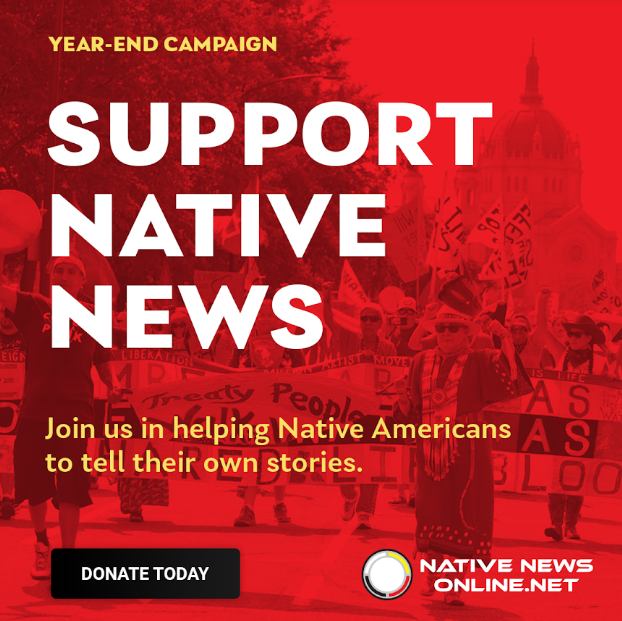
- Details
- By Chuck Hoskin Jr
Guest Opinion. On a truly historic afternoon in early December, we hosted First Lady Dr. Jill Biden and U.S. Secretary of the Interior Deb Haaland on the Cherokee Nation Reservation to review our unique language development programs. We were honored to have this recognition from the highest levels of the U.S. government for our efforts to preserve and grow the Cherokee language.
The visiting dignitaries heard a performance in Cherokee by the Cherokee National Youth Choir, toured our Cherokee Immersion School, spoke with students and teachers at the school, and learned more about our many language programs.
Want more Native News? Get the free daily newsletter today.
Across our 7,000-square-mile reservation and in Cherokee homes across the country, we know our cultural identity is fundamentally rooted in our language. The Cherokee language is an unbroken chain that links back to time immemorial. It has survived despite extraordinary odds, outlasting European contact and colonization, war, and forced removal on the Trail of Tears. Our language outlasted a federal Indian policy that for most of the 20th century — the time of my grandfather’s generation — threatened to dismantle the entire Cherokee Nation.
Now we face foes greater than all of that combined: the passage of time and the fragility of human life. Today we have less than 2,000 fluent Cherokee speakers remaining, who have an average age of 70 years old. They carry in their hearts and minds our most precious cultural treasure. They are the vital links in that unbroken chain to our past. They are indispensable to our effort to save the Cherokee language in the present. But time is working against us.
At the Cherokee Immersion School, a new generation of youth offers hope. They are studying to become the newest links in that unbroken chain. We owe it to them, and to every ancestor who came before us, to make sure they succeed.
Our sacred mission is to revitalize the Cherokee language. With the Durbin Feeling Language Act proposed by Deputy Chief Bryan Warner and I and approved by the Council of the Cherokee Nation in 2019, we have dramatically expanded our language department. This act put $16 million of tribal funds into language perpetuation.
With this investment, we are expanding our best programs and spurring new innovation. We are supporting elder speakers and inspiring more young people to learn. In a year, we will move all of our tribe’s language programs under one roof in a new state-of-the-art language center. On the same campus will be our new elders’ village, with dozens of homes earmarked for Cherokee speakers. Next year, we will open a second immersion school campus in Adair County.

To learn more about our language programs and find resources for learning Cherokee, visit Cherokee language.
The attention and assistance from our federal partners is essential going forward. The on-site visit reconfirms the great friendship between the United States and the Cherokee Nation centered on the vital work of language preservation. It tells us that saving endangered Indigenous languages can and should be a vital American interest.
The Biden Administration is making it so. They are proposing $220 million to help tribal nations better protect and preserve Native languages. This Biden Administration also established a Native Language Workgroup of the U.S. Department of Education, the U.S. Department of Health and Human Services, and the Bureau of Indian Education to make annual reports on their progress. Now it’s time for Congress to act on the proposed funding and for federal agencies to make the workgroup effective.
First Lady Biden, a writing teacher by trade, said that language is “a gift that we give to our children.” I could not agree more. I am full of great hope and optimism that generations from now Cherokees will look back at this time as a pivotal moment. In our mission to save the Cherokee language, we cannot and we will not fail.
Chuck Hoskin, Jr. is the principal chief of the Cherokee Nation.
More Stories Like This
The Absence of October's Job Report Shows Why Native American Communities Need Better DataTribal IDs Are Federally Recognized. ICE Agents Are Ignoring Them.
Thanksgiving: Part of "Broken Circle Holiday"
Thanksgiving is a Tradition. It's Also a Lie
Decisions About Us, Without Us: Education Dismantling Ignores Tribal Nations
Help us defend tribal sovereignty.
At Native News Online, our mission is rooted in telling the stories that strengthen sovereignty and uplift Indigenous voices — not just at year’s end, but every single day.
Because of your generosity last year, we were able to keep our reporters on the ground in tribal communities, at national gatherings and in the halls of Congress — covering the issues that matter most to Indian Country: sovereignty, culture, education, health and economic opportunity.
That support sustained us through a tough year in 2025. Now, as we look to the year ahead, we need your help right now to ensure warrior journalism remains strong — reporting that defends tribal sovereignty, amplifies Native truth, and holds power accountable.
 The stakes couldn't be higher. Your support keeps Native voices heard, Native stories told and Native sovereignty defended.
The stakes couldn't be higher. Your support keeps Native voices heard, Native stories told and Native sovereignty defended.
Stand with Warrior Journalism today.
Levi Rickert (Potawatomi), Editor & Publisher

